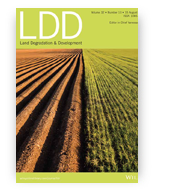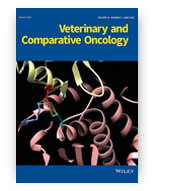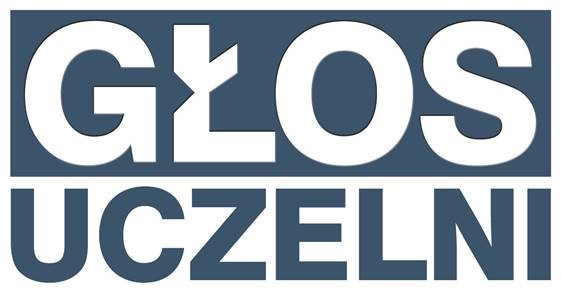
Research papers of the month – August
We present the highest-score research papers of August 2021. These papers were published in journals with the highest Impact Factor − Q1, according to Scimago Journal Rank and Journal Citation Reports by Clarivate.
Krzysztof Józef Jankowski, Bogdan Dubis, Marcin Kozak
Lilla Mielnik, Jerzy Weber, Marek Podlasiński, Andrzej Kocowicz
Małgorzata Grudzień, Aleksandra Pawlak, Kutkowska Justyna, Ewa Zioło, Edyta Wysokińska, Wojciech Hildebrand, Bożena Obmińska-Mrukowicz, Leon Strządała, Andrzej Rapak
Sewage sludge and the energy balance of Jerusalem artichoke production - a case study in north-eastern Poland
Krzysztof Józef Jankowski, Bogdan Dubis, Marcin Kozak
Energy
 Sewage sludge is a specific by-product of wastewater treatment and its use as fertilizer is the most rational and the cheapest strategy for managing this waste product. In this study, the production of aerial biomass, energy inputs and the energy efficiency ratio of Jerusalem artichoke (JA) fertilized with sewage sludge at rates equivalent to 100 and 160 kg N ha−1 were evaluated in a field experiment conducted in north-eastern Poland in 2018-2020. In conventional treatments supplied with mineral fertilizer, energy inputs were determined at 23.5-28.1 GJ ha−1 in the year of plantation establishment and at 12.6-18.3 GJ ha−1 in the second and third year. In treatments fertilized with sewage sludge, the demand for energy was lower by 27-32% in the first year and by 48-54% in the second and third year. Regardless of fertilizer type the optimal nitrogen rate was 100 kg ha−1 (11.7-11.9 Mg ha−1 DM y−1). The biomass of JA plants supplied with 100 kg N ha−1 was also characterized by the highest energy output and energy gain. Energy gain was 5-11% higher per hectare, and the energy efficiency ratio was nearly twice higher in treatments supplied with sewage sludge than with mineral fertilizer.
Sewage sludge is a specific by-product of wastewater treatment and its use as fertilizer is the most rational and the cheapest strategy for managing this waste product. In this study, the production of aerial biomass, energy inputs and the energy efficiency ratio of Jerusalem artichoke (JA) fertilized with sewage sludge at rates equivalent to 100 and 160 kg N ha−1 were evaluated in a field experiment conducted in north-eastern Poland in 2018-2020. In conventional treatments supplied with mineral fertilizer, energy inputs were determined at 23.5-28.1 GJ ha−1 in the year of plantation establishment and at 12.6-18.3 GJ ha−1 in the second and third year. In treatments fertilized with sewage sludge, the demand for energy was lower by 27-32% in the first year and by 48-54% in the second and third year. Regardless of fertilizer type the optimal nitrogen rate was 100 kg ha−1 (11.7-11.9 Mg ha−1 DM y−1). The biomass of JA plants supplied with 100 kg N ha−1 was also characterized by the highest energy output and energy gain. Energy gain was 5-11% higher per hectare, and the energy efficiency ratio was nearly twice higher in treatments supplied with sewage sludge than with mineral fertilizer.
DOI:10.1016/j.energy.2021.121545
Fluorescence properties of humic substances transformed in ectohumus horizons of Podzols affected by alkaline fly‐ash
Lilla Mielnik, Jerzy Weber, Marek Podlasiński, Andrzej Kocowicz
Land Degradation & Development
 Lignite burning is still the main source of energy in many countries, generating huge amounts of alkaline residues deposited in dumping sites, which affects the surrounding environment. There are only a few publications dealing with the effects on pH changes of surface horizons, but there are no reports on the impact on other soil properties. The aim of this paper was to characterize the changes occurring in the soil organic matter (SOM) of ectohumus horizons of Podzols located near the dumping site and at the control site. Conventional one‐dimensional, synchronous and three‐dimensional fluorescence can provided a new information on differences in the structure of humic substances (HS), which are crucial constituents of SOM. Humic acid (HA) and fulvic acid (FA), originally present in the ectohumus horizon, indicated a lower degree of humification, and were characterized by a looser structure, than HS that were extracted from soils affected by fly ash. The neutralization of the soil reaction resulting from the deposition of fly ash favored the formation of higher humified HS, characterized by a higher concentration of aromatic rings in the core of the molecule and the presence of double conjugated bonds. The fluorescence technique could be applicable to monitor the chemical modification of soils in regions affected by ashes but also all factors changing soil pH. The conducted research has shown that fluorescence spectroscopy can be successfully used as a sensitive technique to characterize qualitatively structures of different organic substances present in terrestrial and aquatic systems.
Lignite burning is still the main source of energy in many countries, generating huge amounts of alkaline residues deposited in dumping sites, which affects the surrounding environment. There are only a few publications dealing with the effects on pH changes of surface horizons, but there are no reports on the impact on other soil properties. The aim of this paper was to characterize the changes occurring in the soil organic matter (SOM) of ectohumus horizons of Podzols located near the dumping site and at the control site. Conventional one‐dimensional, synchronous and three‐dimensional fluorescence can provided a new information on differences in the structure of humic substances (HS), which are crucial constituents of SOM. Humic acid (HA) and fulvic acid (FA), originally present in the ectohumus horizon, indicated a lower degree of humification, and were characterized by a looser structure, than HS that were extracted from soils affected by fly ash. The neutralization of the soil reaction resulting from the deposition of fly ash favored the formation of higher humified HS, characterized by a higher concentration of aromatic rings in the core of the molecule and the presence of double conjugated bonds. The fluorescence technique could be applicable to monitor the chemical modification of soils in regions affected by ashes but also all factors changing soil pH. The conducted research has shown that fluorescence spectroscopy can be successfully used as a sensitive technique to characterize qualitatively structures of different organic substances present in terrestrial and aquatic systems.
DOI:10.1002/ldr.3926
A newly established canine NK-type cell line and its cytotoxic properties
Małgorzata Grudzień, Aleksandra Pawlak, Kutkowska Justyna, Ewa Zioło, Edyta Wysokińska, Wojciech Hildebrand, Bożena Obmińska-Mrukowicz, Leon Strządała, Andrzej Rapak
Veterinary and comparative oncology
 We established a canine natural killer (NK)-type cell line called CNK-89 derived from a dog with NK cell neoplasia. Immunophenotyping analysis showed positive staining for CD5, CD8, CD45, CD56, CD79a and NKp46, while negative for CD3, CD4, CD14, CD20, CD21, CD34, Thy1, IgG, IgM and MHCII. Polymerase chain reaction analysis revealed the presence of CD56, NKG2D, NKp30, NKp44, NKp46 and perforin, but the absence of CD16, Ly49 and granzyme B mRNA. Treating CNK-89 cells with IL-2 did not change the expression of activating receptors, TNFα and IFNγ secretion and cytotoxic activity, however, treatment with IL-12 alone or in combinations with IL-15, IL-18 and IL-21 caused an increase in granzyme B and CD16 mRNA, IFNγ secretion and cytotoxic properties of the CNK-89 cell line.
We established a canine natural killer (NK)-type cell line called CNK-89 derived from a dog with NK cell neoplasia. Immunophenotyping analysis showed positive staining for CD5, CD8, CD45, CD56, CD79a and NKp46, while negative for CD3, CD4, CD14, CD20, CD21, CD34, Thy1, IgG, IgM and MHCII. Polymerase chain reaction analysis revealed the presence of CD56, NKG2D, NKp30, NKp44, NKp46 and perforin, but the absence of CD16, Ly49 and granzyme B mRNA. Treating CNK-89 cells with IL-2 did not change the expression of activating receptors, TNFα and IFNγ secretion and cytotoxic activity, however, treatment with IL-12 alone or in combinations with IL-15, IL-18 and IL-21 caused an increase in granzyme B and CD16 mRNA, IFNγ secretion and cytotoxic properties of the CNK-89 cell line.
DOI:10.1111/vco.12695










